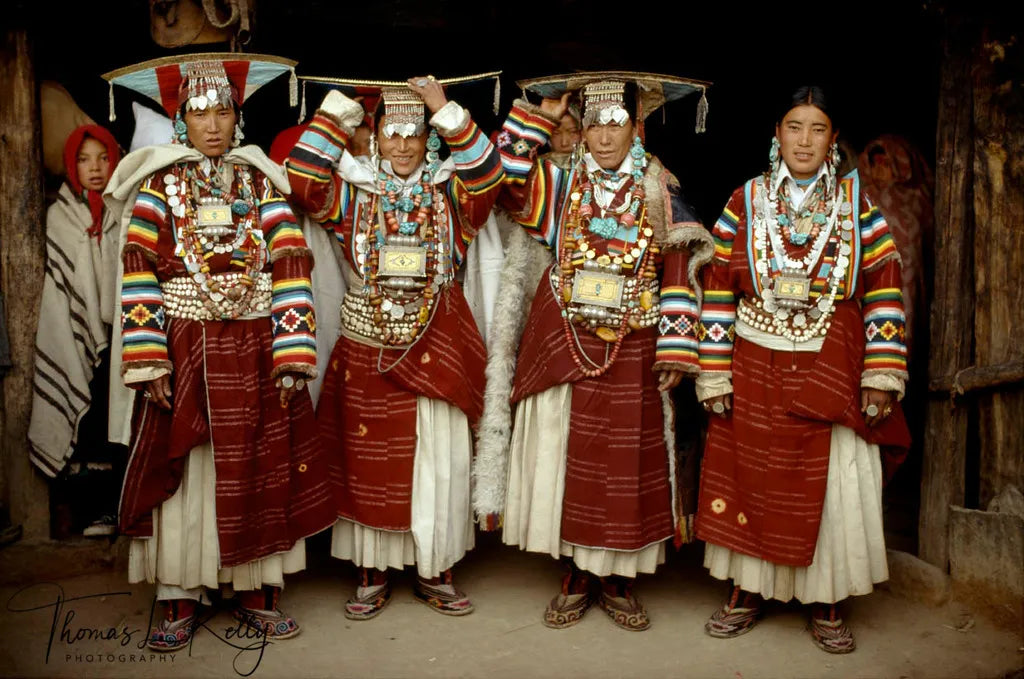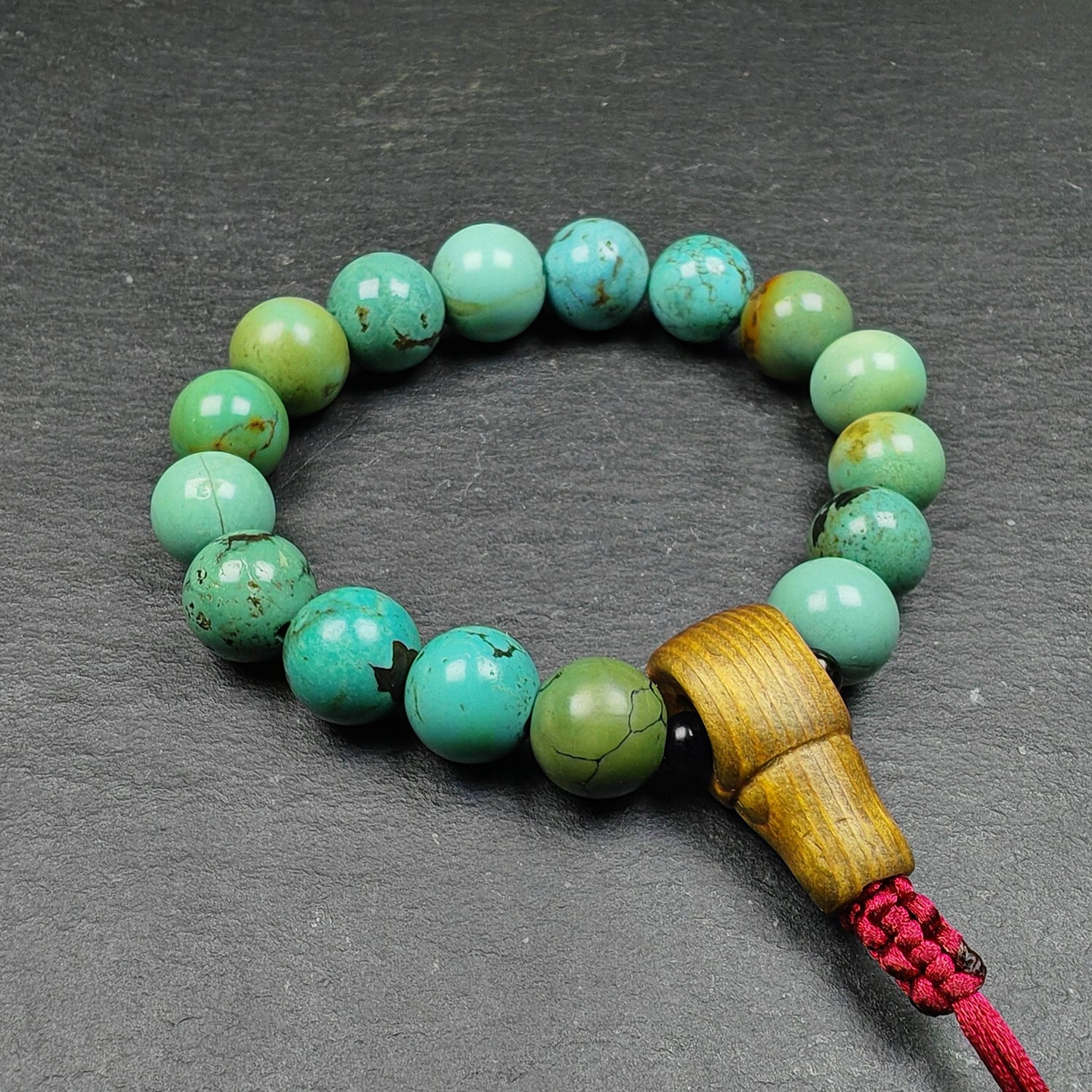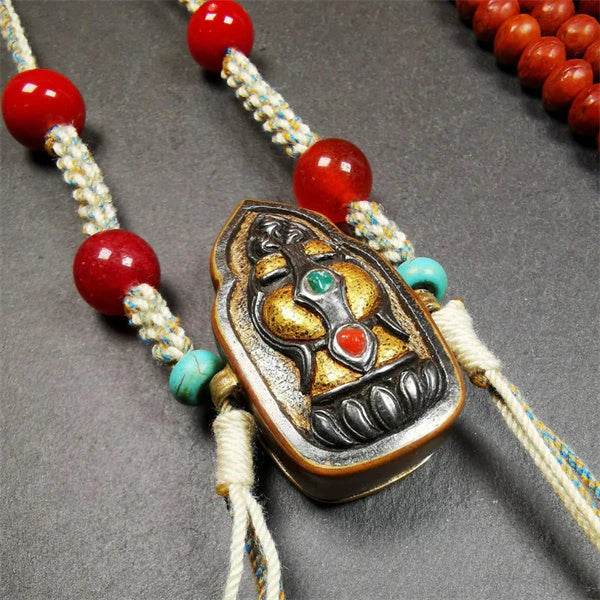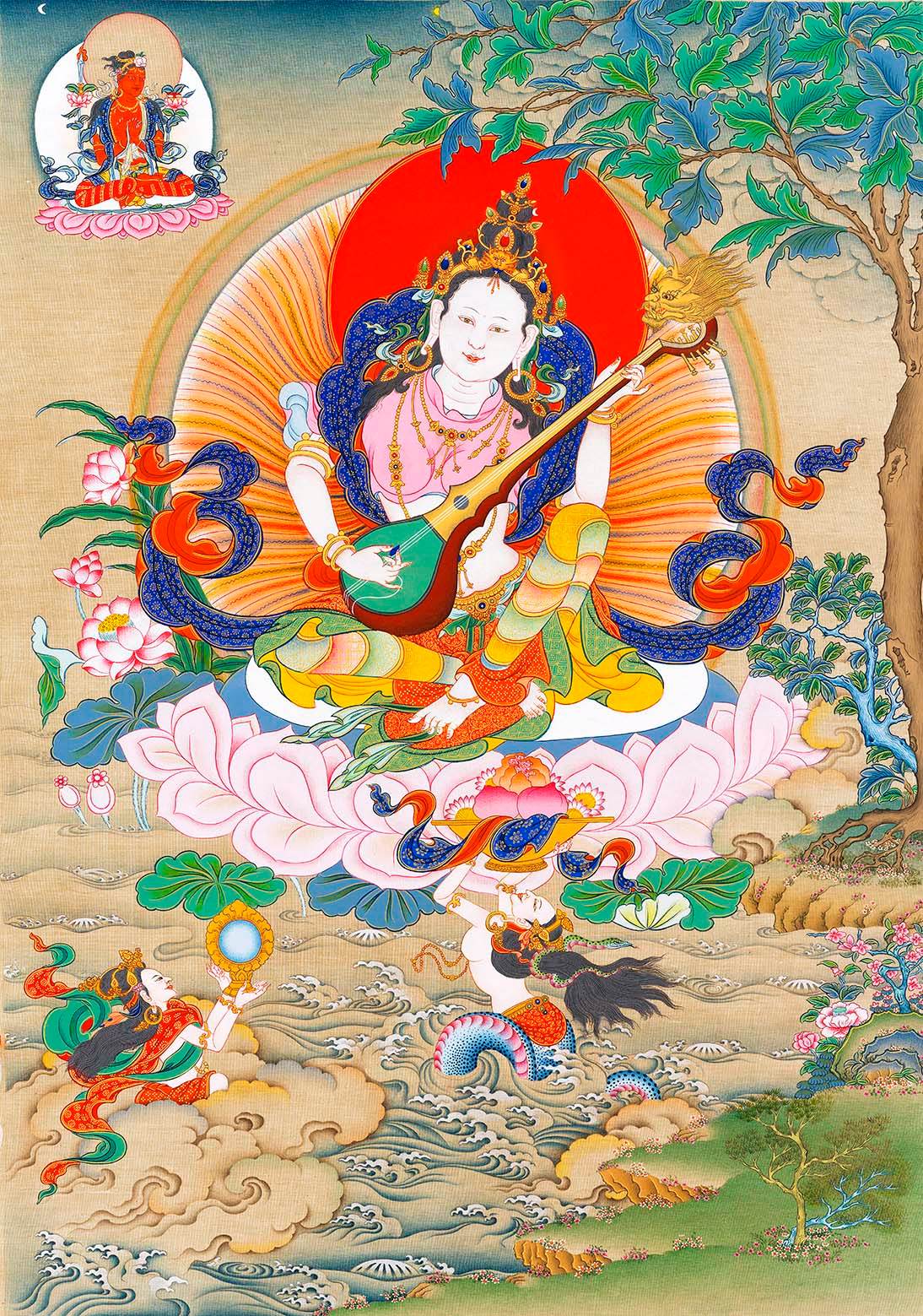
Rainbow on the Body ▎ Romance from Sunlight Valley


Nimba Women's Attire
Image Source: thomaslkellyphotos
ནིམ་བྷ། (Nimba) People from the Valley of Sunlight
Photography: Thomas L. Kelly, Steve Razzetti
Text Editor: Yang Mao

 A Nimba Bride
A Nimba Bride Image Source: thomaslkellyphotos

Image Source: thomaslkellyphotos
 The Groom's Entourage Dance Ritual in a Nimba Wedding
The Groom's Entourage Dance Ritual in a Nimba Wedding Image Source: thomaslkellyphotos
The Four Tribes of Nimba
Humla (འོམ་ལྷ།)
Located in the Karnali Zone of northwestern Nepal,
it is the ancient gateway to the sacred Himalayan peaks and lakes—
Mount Kailash and Lake Manasarovar.
The region blends Hindu and Tibetan Buddhist villages,
situated in the southern and northern parts of Humla, respectively.

Image Source: traildino
According to historical records,
Humla comprises:
- Upper Humla (སྟོད།, 6 tribes),
- Middle Humla (སྨད།, 7 tribes),
- and Tsang (གཙང་།, 5 tribes).
Today, we explore four Tibetan villages
in Middle Humla, collectively called
"The Four Tribes of Nimba"
(ཉིན་ཡུལ་ཚོ་བཞི།, Nyin Yul-tsho bZhi):
Drangshe (དྲང་ཤེད།),
Töpa (སྟོད་པ།),
Bargang (བར་གང་།),
and Nyamachang (ཉི་མ་འཕྲང་།).

Nimba Valley
Image Source: kimkim
Nimba (ཉིན་པ།), or in Tibetan transliteration
"Nyin Yul" (ཉིན་ཡུལ།), breaks down as:
"Nyin" (ཉིན) meaning "daytime,"
"Yul" (ཡུལ) meaning "land."
It translates to "The Land Bathed in Sunlight,"
as its geography ensures the villages bask in sunlight
from sunrise to sunset. The sun rises from Shelmo Gang (ཤེལ་མོ་གངས།,
also called "Crystal Peak"—one of Mount Kailash's 21 guardian peaks)
in eastern Humla, and lingers over these settlements all day.

Nimba Valley
Image Source: kimkim
This was once a prosperous land,
where people thrived on animal husbandry,
grazing livestock on nearby grasslands in summer,
trading salt with Tibet,
and exchanging goods for grain with southern regions.
Yet due to shifting border policies,
it is now one of Nepal's poorest
and most underdeveloped remote areas.

On the Way to Nyamachang Village
Image Source: Flickr
The Hidden Valley of Padmasambhava
Stepping into the Four Villages of Nimba
is like traveling back to the 18th century—
where ancient Tibetan traditions
and ways of life remain preserved.

Nimba Village Ritual
Image Source: Snow Leopard Trek
The Nimba people claim their ancestors
migrated here from Tibet in the 15th century.
They have preserved their Tibetan dialect
and Buddhist faith across generations.
Traditional songs, once heard during Tibetan festivals,
still echo here today.
Losar (Tibetan New Year) is celebrated
in sync with western Tibet.

Ancient Buddhist relics still endure
across the four villages—
like the meditation cave of Padmasambhava
east of Töpa Village,
said to conceal the key
to the Hidden Valley of Töpa Phuk (སྟོད་པ་ཕུག).
 The Elderly Caretakers of Padmasambhava's Meditation Cave
The Elderly Caretakers of Padmasambhava's Meditation Cave Image Source: colorado.edu
Along the path to the temple lies a festival ground
where locals gather annually during Saga Dawa
after circumambulating the sacred peak Shelmo Gang (ཤེལ་མོ་གངས།)
—a pilgrimage substitute for Mount Kailash—
to celebrate the ritual's completion.

Traditional Nimba Ritual Dance
Image Source: Firante Treks
one of Padmasambhava's key meditation caves.
Legend says he concealed terma (hidden teachings) here,
subdued the local mountain deity through meditation,
and left imprints of his head and shoulders in the rock—
formed when evading boulders hurled by the deity.
This site was also sanctified by Milarepa and Shakyapa's spiritual practice.

Raling Monastery
Image Source: colorado.edu
Bedroom in the Storage Room
The four Nimba villages vary in size—
the largest has 58 households,
the smallest around 27.
Houses cluster in compact nuclei,
built with stone and timber,
outer walls coated in gray plaster.

Nimba Valley
Image Source: hwwtreks
Nimba houses typically have three floors:
The ground floor serves as a livestock shed,
divided into separate animal pens.
The second floor is the main living area,
usually consisting of a kitchen-living room
and a windowless storeroom for valuables.
The bedroom is located inside another storage room.
A long external staircase leads up
to an additional storage loft with separate compartments.

Nimba Valley Architecture
Image Source: Steve Razzetti
The main living room differs from other rooms
with its wooden floor and carved pillars,
while others have packed-earth floors
and rough-hewn pillars.
House windows are uniformly small.
Farmlands surround the villages,
each with its own temple and lama.
Temple structures stand apart from dwellings,
typically on elevated, purified ground
above the village.

Nimba Valley Dwellings Beneath Snow Peaks
Image Source: hwwtreks
"I don't want to get married."
Nimba villages primarily practice fraternal polyandry.
Traditionally, all brothers in a family
marry one wife collectively,
minimizing conflicts between siblings.
For instance, daily life signals—
like whose shoes are placed
outside the bedroom door—
indicate which brother is with the wife.

Three Generations of a Nimba Family (Right to Left)
Grandfather, Father, and All Sons with Their Three Wives
Image Source: thomaslkellyphotos
For women,
polyandry functions like life insurance—
if conflict arises with one husband or he leaves,
another brother remains as her spouse.
Tsewang, a Nimba villager,
has five sons aged 23, 12, 8, 6, and 5,
who will soon marry one 15-year-old bride.

Wedding Ceremony of Tsewang's Five Sons
Image Source: thomaslkellyphotos
In Nimba villages,
girls may marry very young,
but after the wedding ceremony,
they can return to live with their parents
until reaching adolescence—
only then joining their husbands
to fulfill marital duties.

Tarilal's Wedding Morning
Image Source: thomaslkellyphotos
"I don’t want to get married,"
the ten-year-old confesses.
"I want to stay home with my friends—
but what can I do?
I must obey my parents."

A Ten-Year-Old Bride's Wedding
Image Source: thomaslkellyphotos
As the first anthropologist
to conduct fieldwork in Nimba villages,
Nancy Levine noted:
"When I asked the Nimba why their society
practices polyandry,
the answer was always the same—
it’s an ancient custom passed down
by their ancestors from Tibet."

Nimba Wedding Ceremony
Image Source: thomaslkellyphotos
To some extent,
Nimba wedding rituals recreate the 7th-century scene
when Songtsen Gampo married Princess Wencheng of Tang—
a groom's representative plays the role of royal minister,
whose wit and skills determine
the bride's hand in marriage.

Nimba Wedding Ritual
Image Source: thomaslkellyphotos
"Rainbow Body Dakini"
Nimba attire is distinctive:
Both genders wear red robes—
men add crimson shawls,
dark red waist sashes,
and white turbans.

Nimba Men
Image Source: thomaslkellyphotos
For important occasions like weddings
or mani masked dance rituals,
men wear a black-based robe
with multicolored patterns—
buttoned straight or diagonally.
Woven from black wool,
the robe bears hundreds of motifs
symbolizing sky, mountains, and streams,
paired with embroidered boots.
This is the sacred dance costume set.

The groom's representatives greet the bride
through song-and-riddle dances.
Image Source: thomaslkellyphotos
Nimba women’s attire follows a similar style:
handwoven red robes
with white or bejeweled waist sashes,
adorned with rainbow-colored stripes
across the chest, shoulders, and cuffs—
symbolizing their earthly manifestation
as Rainbow Body Dakinis.

Nimba Women in Traditional Attire
Image Source: thomaslkellyphotos
Heirloom
The classic Perak headdress of the Holy City region
also appears in Nimba villages.
Once worn daily during fieldwork,
it’s now reserved for festivals and rituals.

Additionally,
Nimba women wear portable gau boxes
of gold/silver, amulets with mantras,
and large amber necklaces—
symbolizing wealth, fertility,
and thriving descendants.

Nimba Wedding Ceremony
Image Source: thomaslkellyphotos
Coral and turquoise stand
as Nimba’s most common jewels.
Coral embodies heat—feminine energy
to stimulate fertility,
while turquoise channels cool,
masculine vitality.
Only when paired do they balance
and protect health.
These heirlooms pass
through generations.

Nimba Women's Adornments
Image Source: thomaslkellyphotos
Rainbow Worn on the Body
Nimba robes—dyed with plant pigments
and adorned with tie-dyed sun symbols—
declare their wearers’ identity:
the People of Sunlight Valley.

Nimba Family: Bride (center) with Her Five Husbands and In-Laws
Image Source: thomaslkellyphotos
These people of Sunlight Valley,
though dwelling in the Himalayas'
most remote and impoverished corner,
wear skies, mountains, flowing waters,
and rainbows on their bodies
and in their hearts—
the purest romance.

Nimba Women in Full Traditional Attire
Source: thomaslkellyphotos
May they thrive forever
in this hidden Himalayan valley—
still untouched
by modern clamor.

Nimba Girl
Image Source: Steve Razzetti







1 comentario
50opn0